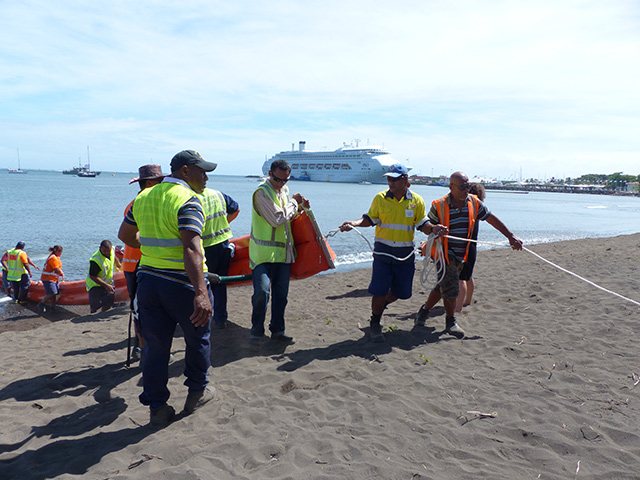(1) Clean the deck surface or ground where the boom is placed, make sure there are no obstacles affecting the boom, and lay
out protective mats.
(2) Arrange each section of boom neatly side by side according to the smooth and connect, and connect the towing rope at the
end of the first and the last section of boom (the towing rope should have enough length).
(3) Use tugboat, winch or manual slowly towing boom all into the water, towing to the established position.Inflatable booms are generally wound on a winding machine, and the deployment operation requires the operation of a power
station to control the winding machine and to inflate the boom. Other operations are basically the same as fixed type booms.
(1) Place the winding frame and power station at the proper position on the aft deck of the ship and fix them.(3) Start the winding frame and inflate each section of the boom at the same time. After the inflation pressure reaches the rated
value, tighten the valve.
(4) Inflate each section of the boom in turn, and slowly tow into the water.(5) When unfolding the last section of the boom, to ensure that the boom will not be lost in the water, the boom should be
connected to the bollard or other fixed objects.After all into the water, tow to the established position and shape, and fix the
tow rope at both ends of the boom.
Different types of boom storage methods, general inflatable boom winding in the winding frame, occupy little space, storage is more convenient, most storage in the container, easy to use when lifting transport. Solid float type boom storage occupies more space, if loose, after the accident loading and unloading vehicles and handling time consuming, laborious, can be stored in large packages as a unit, but also 100-200 sections together in a special frame, convenient to use and lifting. Open storage boom should be well protected by drainage and shading to avoid sun exposure. Indoor storage boom storage exists in a ventilated, cool and dry place.
Inflatable boom maintenance in addition to the boom regularly open drying, power mechanical parts should be regularly lubricated, rust maintenance, generally at least 2 times a year drying, and check whether the parts are intact, the boom is broken, aging, cracking and other phenomena. Fixed float type boom open at least twice a year, check whether the surface of the boom body aging, cracking, damage, and tension parts, connecting parts, etc. are intact.

Contact JXY for more information about Oil Containment Booms.
JXY has extensive experiences in oil spill containment. We have a full range of Oil containment booms for any application.
Our technical experts and proven solutions can help your business overcome the challenges of managing spills.